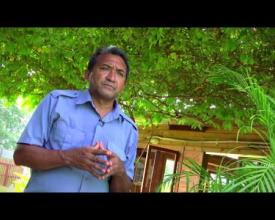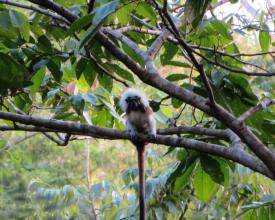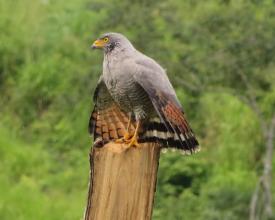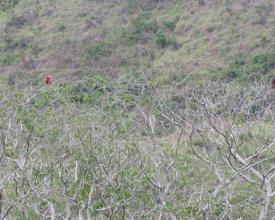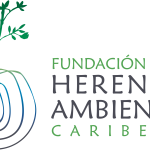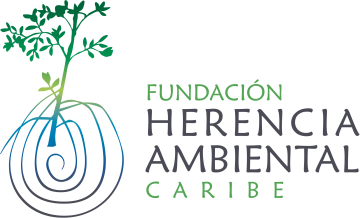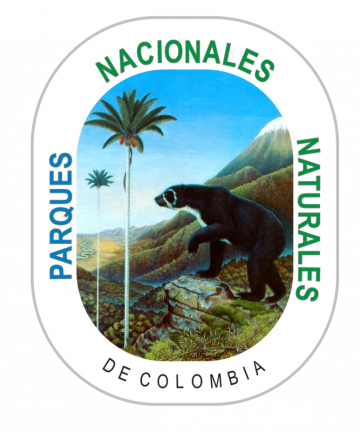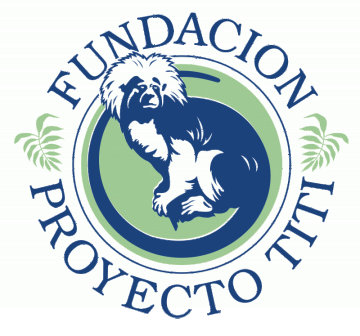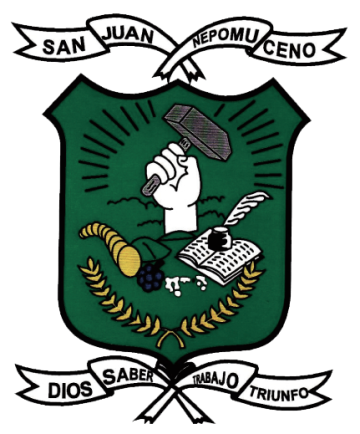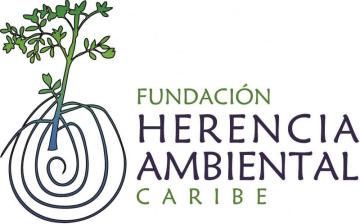
Montes de Maria Socio-ecosystemic Connectivity Corridor
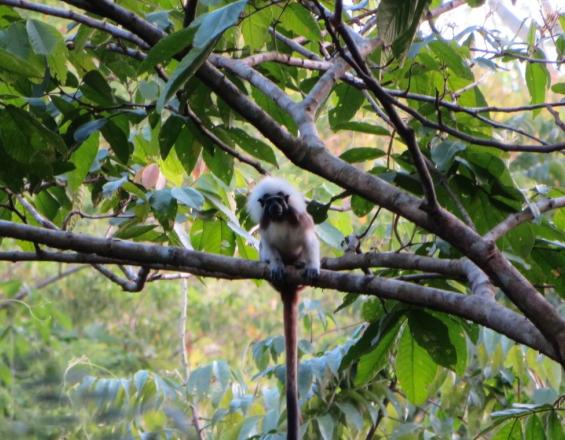
The tropical dry forest is home to numerous endemic species and is one of the most threatened ecosystems in the world. Only 8% of Colombia's original tropical dry forest area remains; most is outside protected areas. During the last decade, the Caribbean Environmental Heritage Foundation, the National Parks System, and 5 other organizations have started implementing the Socio-ecosystemic Connectivity project in the Montes de Maria region. This project aims to conserve remnants of tropical dry forests on private lands by signing conservation agreements with small and large-scale farmers. As part of the conservation agreement, the landowners not only preserve the forest area on their property but also start a transition to sustainable (climate-smart) agricultural practices (e.g., agroforestry) and governance building, strengthening the social and institutional fabric in a formerly violence-impacted area, making this model highly replicable.
Context
Challenges addressed
- Anthropogenic pressures and climate variability (prolonged droughts)
- Selective logging of timber trees
- Unsustainable agricultural practices based on slash-and-burn practices by small farmers and extensive plantations of exotic timber trees (teak)
- Intensive cattle ranching
- Fragmented ecological value
- Destruction of the social fabric due to the armed conflict
- Limited female and youth participation and connection with agriculture and nature due to displacement to the urban sector, threatening traditional knowledge and continuity of agricultural production in the area.
Location
Process
Summary of the process
The following building blocks have helped guide the implementation of sustainable agricultural practices, combined with environmental conservation, socioeconomic well-being, and social and institutional fabric strengthening. All three are essential to ensuring the continuity of the project: financial sustainability, social sustainability, and environmental conservation.
The financial support comes from national and international contributions, which have been fundamental to promoting this project. Compensation processes also play a fundamental role in maintaining the Conservation Agreements with private parties.
A determining factor has been the consolidation of the reconstructed social fabric, forging new ties, and reinforcing the previous ones in joint and united community action with the reorganization or replanning of the territory towards sustainability and the maintenance of the ecological structure of the territory.
Building Blocks
Internal and external financial sustainability
The financial resources for developing policies and actions aimed at environmental recovery, protection, and conservation come from both national and international aid from public and private institutions.
The initiative is part of the 2019-2023 Action Plan of the Local System of Protected Areas Committee (SILAP, Sistema Local de Áreas Protegidas) of the Municipality of San Juan Nepomuceno and the strategies of the Los Colorados Flora and Fauna Sanctuary Management Plan to guarantee its biological viability, which is why long-term continuity of the activities is expected.
Enabling factors
- Roles: Articulation of stakeholders' roles and investment of long-term resources.
- Trust: Trust in the partnership, both from an institutional and stakeholder point of view, which bridges times of financial difficulties.
Lesson learned
- Playing to your strengths: Several organizations work on nature conservation in the region; therefore, leveraging each organization's strengths opens up more funding opportunities.
Trust: The project has led to the construction of trust around the relevance of sustainable resources management on different public and private scales (governance), which increases the likelihood of continuity and funding.
Reconstruction of the social fabric as a catalyst element
This project has helped to rebuild the social fabric, allowing neighbors and members of the villages to get to know each other and work together through training (Agroforestry Field Schools) and the implementation of productive group activities such as beekeeping, community conservation areas and demonstrations plots in the villages, allowing the recovery of values such as trust, credibility, friendship and the definition of rules of the game and co-responsibilities. One of the most important elements of the project is to achieve the union between the people of the villages and the institutions and organizations dedicated to promoting sustainable development.
Enabling factors
- Mutual cooperation
- As local as possible: Project staff come from the region and are farmers themselves. Selecting staff as locally as possible has ensured that challenges are addressed appropriately and in a timely manner and has increased confidence in the project process and outcomes.
- Willingness to be flexible to the community's needs: Each farm cohort (vereda) has unique challenges and needs, and adapting to them with flexibility has ensured that the veredas can strengthen and enhance their opportunities based on their interests.
Lesson learned
- Connection to the territory: The project has strengthened the opportunities for families to return and stay longer on the farms to carry out planned activities, especially women and children who were displaced to the urban center during the years of violence.
Improvement of socio-economic conditions through conservation
From the social point of view, the project model achieves reasonably and cost-effectively, in a relatively short time (1-2 years), to generate production conditions that improve the quality of life of the beneficiaries' families in two ways: the incorporation of a more varied diet that includes more vegetables, fruits, and proteins (chickens and eggs) and the diversification of productive activities that in turn increase the economic income received by the families.
Enabling factors
- Sustainable agricultural practices: The transition from unsustainable activities to sustainable activities provides noticeable positive results regarding production.
- Knowledge exchange: The project connects traditional and scientific knowledge, thereby, providing more integral approaches (different ways of knowing, value of water beyond the tangible, social, economic, ecological, and spiritual).
Understanding the community: The project staff is from the region and are farmers, ensuring that the project's ideas and objectives align with the community's needs, such as, dietary needs, ecotourism interests, etc. The number of families interested in participating in the project is growing, which attests to its success.
Lesson learned
- Monitoring: The comparison of the project's pre- and post-implementation situation provides evidence of this building block's importance. These data are complemented by information and figures on post-phase production, which allow us to account for the magnitude of the change achieved in terms of improvement in the beneficiaries' quality of life.
Impacts
The project has connected the Los Colorados Sanctuary with the Cerro Maco (protected area) through the socio-ecosystemic corridor, thereby increasing the Sanctuary's size and enhancing the probability of ecosystem connectivity by 33%. Due to the project's success in working with private landowners, there is interest in expanding the corridor further south.
Agricultural production practices have been improved on 175 farms within the corridor's 3,672 hectares, strengthening these families' capacity to produce and market sustainable agricultural products generated on their farms.
The positive effects on biodiversity are tangible. (Participatory community) monitoring activities have shown improved natural habitat conditions and increased biodiversity in the conservation zones (e.g., some felines have returned to the area).
In terms of environmental governance, the project has contributed to improving the capacities of public and private organizations and the community for effective natural resource management and consolidating the social and institutional fabric by strengthening relations between inhabitants and institutions.
In socioeconomic terms, the quality of life of the project's participants has improved regarding food security, food diversity, and income.
Beneficiaries
- Local (municipality), regional (CARDIQUE) and national (National Natural Parks) environmental authorities
- 175 families from 20 farming cohorts (veredas)
- Tropical dry forest ecosystem and endangered and endemic species
Global Biodiversity Framework (GBF)
Sustainable Development Goals
Story
My name is Wilmer Andrade, and I'm from San Juan Nepomuceno.
The project began in 2014 due to issues such as the lack of ecological fragmentation, slash-and-burn practices, soil deterioration, and a broken social fabric. Thanks to collaborative participation, the situation has improved. Community members have become closer, corridors have been created, and production methods have improved. The main catalyst for success has been the lack of hierarchies within the community; everyone is an observer of everything. Another relevant element was the exchange of knowledge through participatory research centers, where academic knowledge is combined with the practical knowledge of local residents, and together, they enrich and contribute to the continuation of the connectivity process. The magnitude of the success achieved with this project is such that other municipalities are currently working on replicating it. This project is now in its sixth phase. We are very pleased and proud to serve as a model for improving the conditions for preserving biodiversity for families and for the entire community, achieving results that contribute to the preservation and conservation of nature.
This case was documented by the International Union for Conservation of Nature (IUCN). The case was highlighted in a survey to identify Complementary Conservation Strategies (CCS) in Colombia, conducted by ICLEI South America in 2018. For more information: http://sams.iclei.org/es/que-hacemos/proyectos-en-ejecucion/areas-protegidas-locales/colombia.html
The IUCN and ICLEI actions took place within the framework of the regional project Protected Areas and Other Area-Based Conservation Measures at the Local Government Level and were financially supported by the Deutsche Gesellschaft für Internationale Zusammenarbeit (GIZ) GmbH. The regional project is being implemented by the environment ministries of Brazil, Colombia, Ecuador, and Peru, and by GIZ, in cooperation with ICLEI and IUCN. The regional project is supported by the German Federal Ministry for the Environment, Nature Conservation and Nuclear Safety (BMU) within the framework of the International Climate Initiative (IKI).

